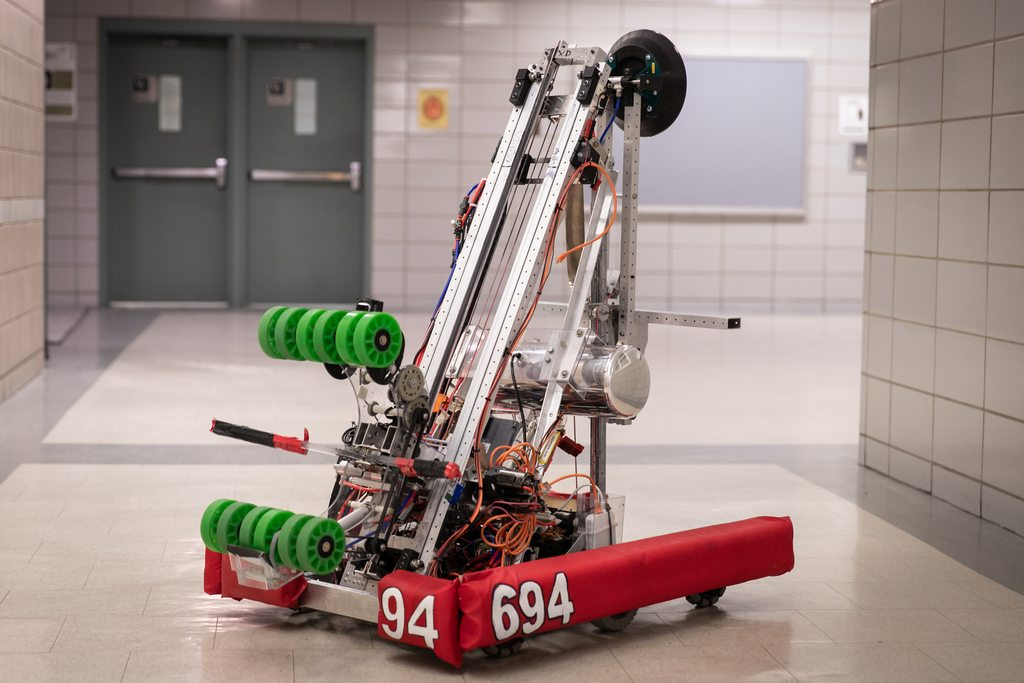Active Intake¶
There’s one main rule when it comes to intakes in FTC: you’ll always need one. There are multiple parts of an effective intake: intake geometry, intake type and material, and speed. However, a common rule of them is the faster the intake, often the more effective it is. For example, near the end of Rover Ruckus, many of the top performing teams used a 3.7:1 (1600 RPM) motor or a 5.2:1 (1000 RPM) motor on their intake. While not a necessity, it is highly recommended that teams dedicate at least one motor to their intake if possible.
“Touch it, own it”: the JVN school of picking stuff up
When your intake comes in contact with game elements, you want it to instantly be controlling them. You should design with a margin for error, both in the orientation of the game piece and in the alignment of the robot. For example, look at FRC team 694’s ball intake on their 2019 robot:

FRC 694 StuyPulse, Deep Space¶
When this robot drives up to a ball, it barely has to point itself at the ball and it’s instantly locked in between the two rows of wheels. What makes it so effective is the immense amount of testing that went into its design. The team tried a number of intake shapes, initially building with wood and rubber bands, and recorded which shapes were most effective. By testing their intake design out before competition, they didn’t have to guess whether it would work as intended: they put it on the field with confidence.